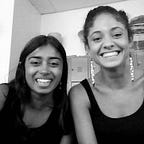Book Review: Save Me a Seat
Our first chapter book read aloud this year was Save Me a Seat by Gita Varadarajan and Sarah Weeks. It’s an amazing book for so many reasons, and was the perfect first read aloud for our class. While we felt it allowed for natural segues into many of the beginning of the school year discussions and activities, it’s a perfect book for anytime of the year.
There are two narrators which leads to two vastly different perspectives (often on the same event). Our students reflected often on how two people can experience the same events very differently. This helped them brainstorm ways to be understanding and empathic. One of our students referenced part of the book as an explanation of how misunderstandings happen and why assumptions are dangerous.
One of the main characters, Ravi, is a new student (and recent immigrant). His experiences helped us talk about how we want people to feel in our classroom. Joe, the other main character, feels like a target at school, and before we brainstormed agreements (rules) for our class contract, we discussed what we can do to make sure no one has to feel like Joe did in our community. Students also really identified with Ravi’s frustration when his name was mispronounced and talked seriously about the importance of using names carefully and respectfully. The other day, when a substitute teacher was in our class, the students took it upon themselves to carefully learn her name even after she said it was a hard name and they were welcome to call her Mrs. K instead.
Save Me a Seat also teaches students about the significance of an apology. Sometimes (for kids) it can feel like saying sorry is simply a stepping stone towards moving on or getting out of trouble. But in Save Me a Seat, Joe’s father writes him a moving and heartfelt letter accepting responsibility for how he made Joe feel (instead of saying I didn’t mean to or focusing only on his intent) and acknowledging that it is okay for men (and boys) to have feelings after all. Especially with third graders who can have difficulty genuinely connecting abstract concepts, reading and discussing this part of the book was such an important lesson in apologizing, accepting responsibility, and discounting messages of how you are “supposed to” feel, act, or behave (because of gender, coolness, or something else).
Our students also learned so much and wanted to learn so much from reading this book. They asked questions (and we investigated) about Bangalore, South Indian food, Auditory Processing Disorder (APD), and more. They repeatedly asked us to share the recipes found in the book and poured over the glossaries for each main character in the back. We (teachers) also loved that there was a glossary for each main character as opposed to only one for Ravi.
Including two glossaries makes them a tool for each character to be understood more fully instead of an indication of Ravi’s foreign state. It also made me (as an Indian-American), happy because it means that readers were less likely to ask me (or other South Asian people) to explain or translate words or references in the book. The South Indian food in the book was not portrayed as foreign or weird or (my personal pet peeve) something only “adventurous” people eat. It was simply food, just like the food Joe ate.
Save Me a Seat is also a great mentor text. We will keep coming back to it all year as an example of how to develop characters, use descriptive language, write dialogue and more. The fact that each chapter ends in a cliff hanger makes it an exceptional read aloud.
Our students were so enthralled with the book that we decided to have a mini-celebration at the end complete with South Indian food. We ordered idli and sambar from Pansaari, a local restaurant, and the students were so excited to eat one of Ravi’s favorite foods. We had talked about respecting other people’s likes and dislikes and the students were quick to point out that this applies to food as well. Even students who said they don’t like spicy food or who are very picky about what they eat for lunch were excited to try the idli, sambar, and coconut chutney. While they ate, we (teachers) read aloud and finished the book. We also talked about our favorite parts of the book and looked at different locations from the book on a map.
Since we finished our read aloud, six of our students have eagerly reread Save Me a Seat independently (which works well for their development of comprehension and decoding skills in third grade). Many other students have asked if they can have the book next. They also trust our recommendations so much more! We love all of the enthusiasm around reading (and incorporating food, geography, kindness, and more). We truly couldn’t recommend this book more highly!
Originally published at teachpluralism.squarespace.com.
